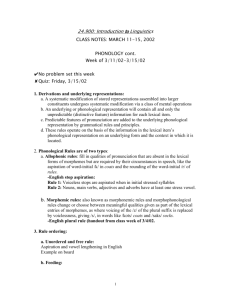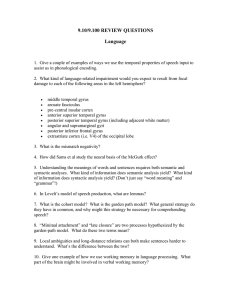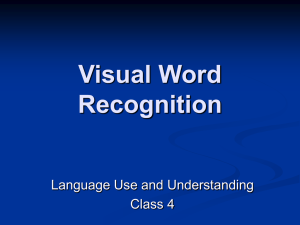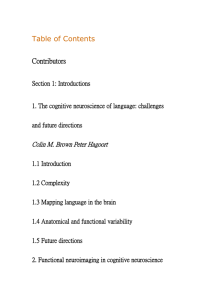The scope of generalization in phonology
advertisement
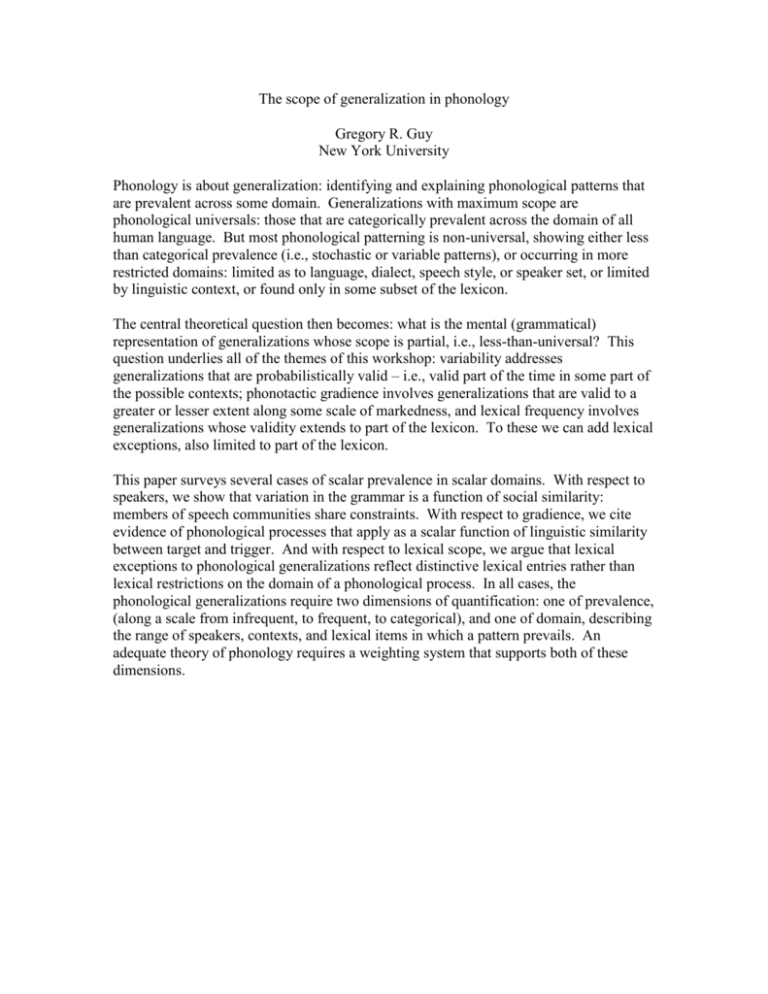
The scope of generalization in phonology Gregory R. Guy New York University Phonology is about generalization: identifying and explaining phonological patterns that are prevalent across some domain. Generalizations with maximum scope are phonological universals: those that are categorically prevalent across the domain of all human language. But most phonological patterning is non-universal, showing either less than categorical prevalence (i.e., stochastic or variable patterns), or occurring in more restricted domains: limited as to language, dialect, speech style, or speaker set, or limited by linguistic context, or found only in some subset of the lexicon. The central theoretical question then becomes: what is the mental (grammatical) representation of generalizations whose scope is partial, i.e., less-than-universal? This question underlies all of the themes of this workshop: variability addresses generalizations that are probabilistically valid – i.e., valid part of the time in some part of the possible contexts; phonotactic gradience involves generalizations that are valid to a greater or lesser extent along some scale of markedness, and lexical frequency involves generalizations whose validity extends to part of the lexicon. To these we can add lexical exceptions, also limited to part of the lexicon. This paper surveys several cases of scalar prevalence in scalar domains. With respect to speakers, we show that variation in the grammar is a function of social similarity: members of speech communities share constraints. With respect to gradience, we cite evidence of phonological processes that apply as a scalar function of linguistic similarity between target and trigger. And with respect to lexical scope, we argue that lexical exceptions to phonological generalizations reflect distinctive lexical entries rather than lexical restrictions on the domain of a phonological process. In all cases, the phonological generalizations require two dimensions of quantification: one of prevalence, (along a scale from infrequent, to frequent, to categorical), and one of domain, describing the range of speakers, contexts, and lexical items in which a pattern prevails. An adequate theory of phonology requires a weighting system that supports both of these dimensions.
